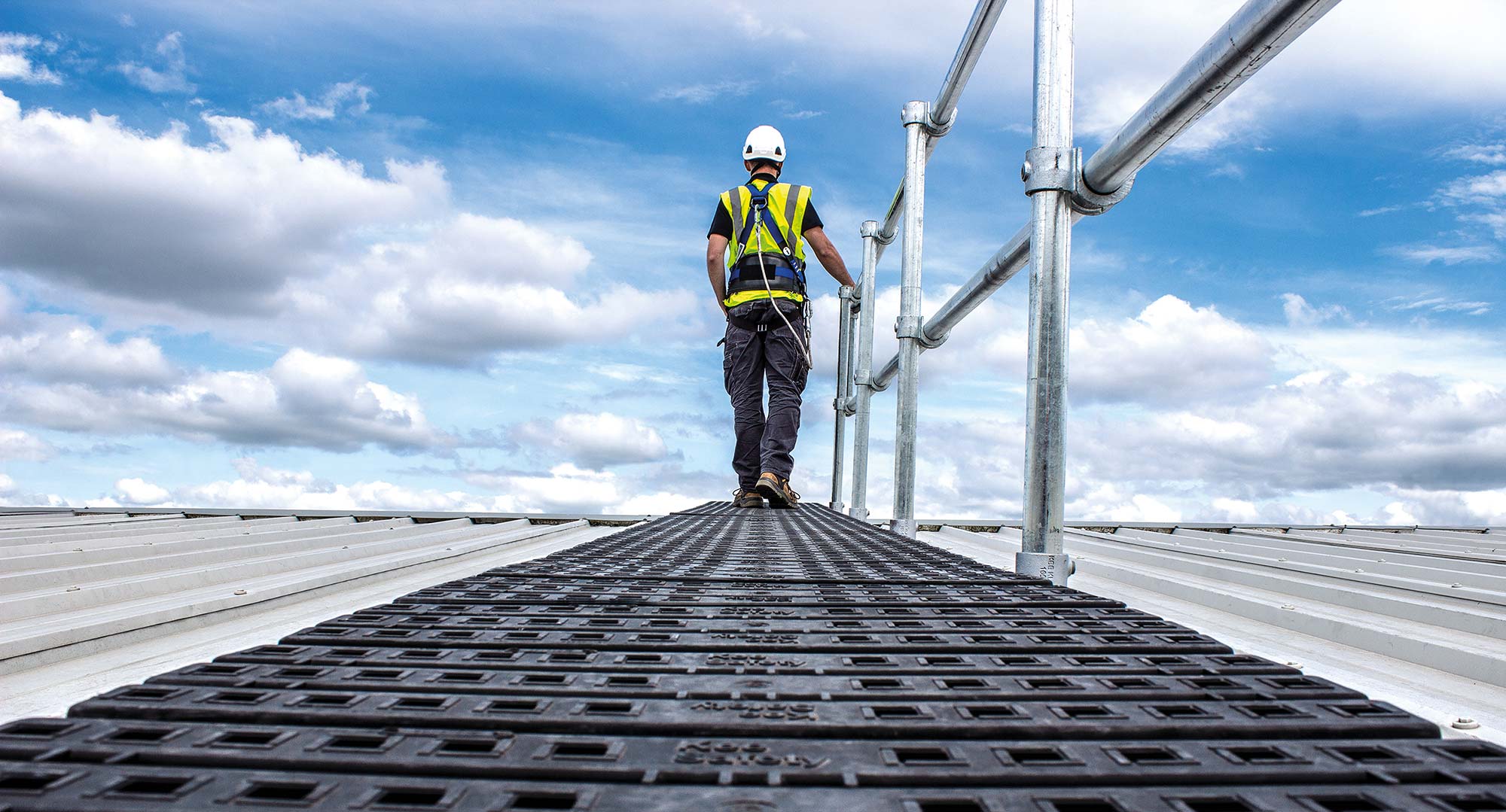Working on rooftops can be a perilous task. In the Philippines, where the tropical climate often necessitates rooftop maintenance and repair, ensuring the safety of workers becomes paramount. This blog explores a crucial safety measure – roof walkways. We’ll delve into the significance of roof walkways, their benefits, material options, and their application in the Philippines.
The Risk of Rooftop Work
Rooftop work is fraught with dangers. Slippery surfaces, uneven terrain, and the risk of falling are ever-present threats. According to safety statistics, rooftop accidents are a significant concern for workers in various industries. Protecting workers is not only a legal obligation but a moral one as well.
Understanding Roof Walkways
Roof walkways are engineered systems designed to create safe, stable, and slip-resistant surfaces on rooftops. They serve a dual purpose: preserving the integrity of the roof and safeguarding the lives of those who work on it. These walkways are indispensable in ensuring safety when working at heights.
Benefits of Roof Walkways
- Preventing Surface Damage: Roof walkways prevent unnecessary damage to the rooftop, preserving its structural integrity and lifespan.
- Enhancing Worker Safety: They provide a secure path for workers, minimizing the risk of slips, trips, and falls.
- Creating Well-Defined Paths: Roof walkways define areas where workers should tread, keeping them away from off-limits zones.
- Customization: They come with adjustable hue options, such as bright yellow for maximum visibility and muted gray for discrete use.
Material Options for Roof Walkways
- Aluminum Walkways: These are durable and non-corrosive, making them suitable for various environments. They are lightweight and easy to install without welding. The aesthetic appeal of aluminum 6063 ensures an appealing finish. Plus, they can be equipped with guardrails for added safety.
- Fiberglass Walkways: Ideal for corrosive environments like petrochemical industries and marine vessels, fiberglass walkways are non-corrosive and incredibly strong. They are lighter than aluminum, easy to install, fire retardant, and offer high visibility with color choices of yellow or grey. Handrails can be added for extra safety.
Applications in the Philippines
The Philippines’ climate can be unforgiving, with typhoons and heavy rains being common occurrences. Roof walkways are well-suited for this environment, providing year-round protection for workers in various sectors like construction, manufacturing, and facility management.
Installation and Maintenance
Roof walkways are typically easy to install, with options for mounting on different surfaces like metal decks, standing seam roofs, or concrete. Regular maintenance is essential to ensure their continued effectiveness and safety.
Safety Regulations and Compliance
The Philippines has specific safety regulations to protect workers. Roof walkways help meet these regulations by providing a safe working surface and delineating safe paths for workers.
Case Studies
To underscore the importance of roof walkways in the Philippines, here are a few case studies demonstrating successful installations that have significantly improved worker safety and roof longevity.
Conclusion
In the Philippines, where rooftop work is a necessity, ensuring the safety of workers is non-negotiable. Roof walkways are not just safety measures; they are investments in preserving lives and roofs. If you’re involved in rooftop maintenance or construction, consider the benefits of roof walkways to protect your workers and your assets.




